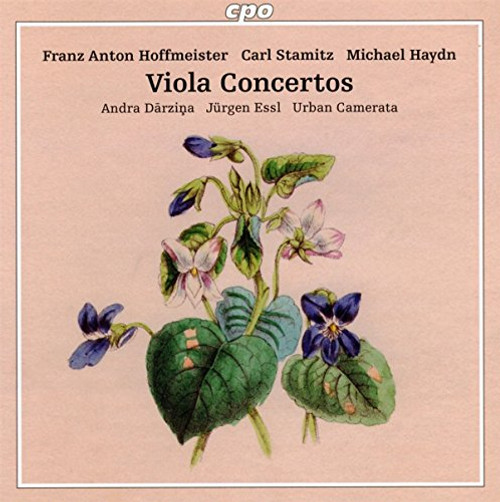Product Description
Following his critically acclaimed recording of all the Mozart concertos, Giuliano Carmignola fulfills his long-held wish to record the unjustly neglected, wonderful Violin Concertos of Joseph Haydn.
These concertos showcase Haydn's originality, wit, spirit, and melodic inventiveness Carmignola's technical precision, disciplined musicality, and gorgeous tone bring every one of the composer's intentions to vivid life.
His musical collaborators here, the remarkable Orchestre des Champs-Élysées - known for performing repertoire from Haydn to Mahler on period instruments - makes an ideal partner.
Review
The "Exemplary Giuliano Carmignola"Makes Exemplary Music with the Complete Haydn Violin Concertos --
The Times
About the Artist
Joseph Haydn's concertos for solo instrument and orchestra may seem to be marginal to his vast symphonic output. Or at least the figures may suggest that this is the case, for his 106 symphonies inevitably overshadow a mere twenty-four concertos for strings, winds and keyboard instruments, not all of which have survived. Most of them date from Haydn's early period as a composer, and only three - for keyboard, cello and trumpet - were written after 1770. If Haydn demonstrably took less interest in the medium of the concerto than he did in that of the symphony, then this was no doubt the result of his ambitions as a composer - in the years around 1760 and 1770 the symphony was regarded as the most prestigious of orchestral genres, whereas the concerto occupied a lesser rank in the eyes of composers and theorists. Writing in his Allgemeine Theorie der schönen Künste (General Theory of the Fine Arts), Johann Georg Sulzer, for example, claimed that the concerto was basically "no more than an exercise for composers and performers and a very ill-defined amusement for the ear that aimed at nothing more than that."
Haydn became vice-Kapellmeister to the Esterházy princes on 1 May 1761, the date on which he signed a treaty that represented only one of the measures undertaken by Prince Paul Anton in the spring and summer of 1761 with the aim of reorganizing his court orchestra. Bound up with Haydn's appointment was the organizational division of the court's musical life into two distinct ensembles. Church music was placed in the hands of the elderly senior Kapellmeister Gregor Joseph Werner, while the "Hoff- und Camer
Haydn Violin Concertos
Was:
$65.86
Now:
$32.93
- SKU:
- UTH199373
- UPC:
- 028947787747
- Condition:
- New
- Availability:
- Free Shipping from the USA. Estimated 2-4 days delivery.







